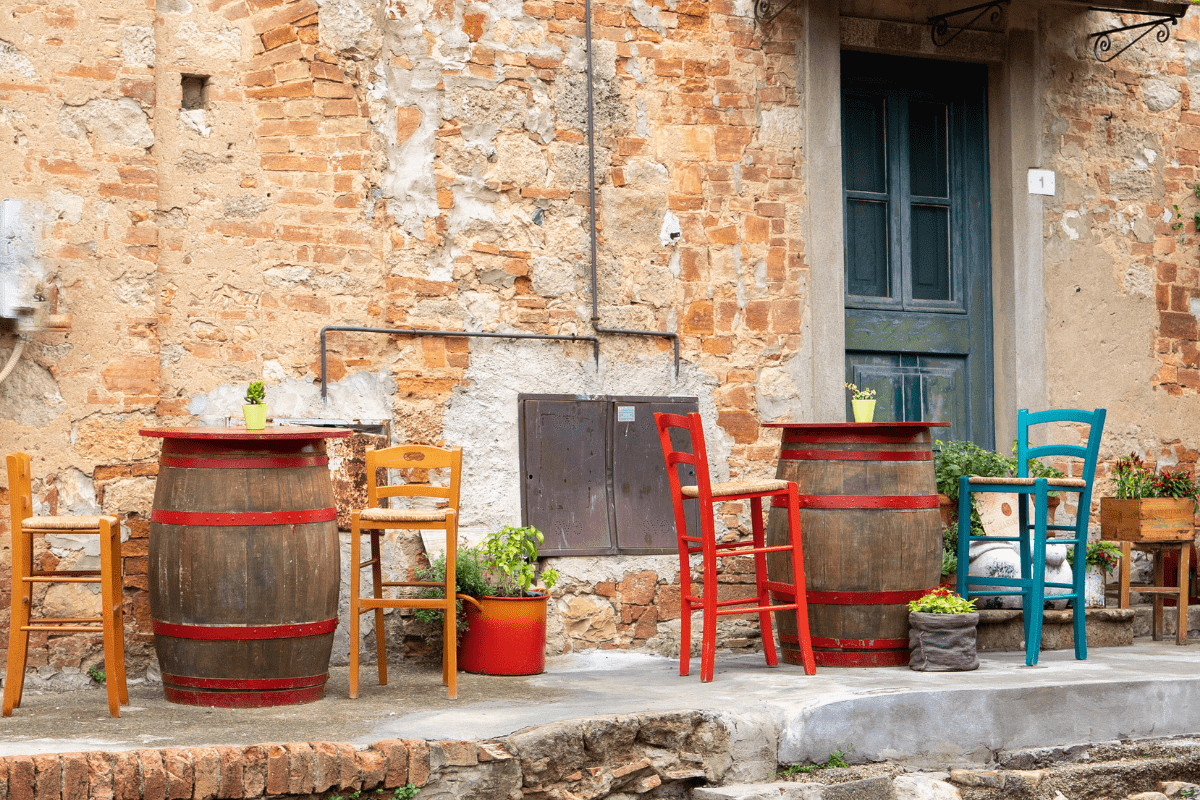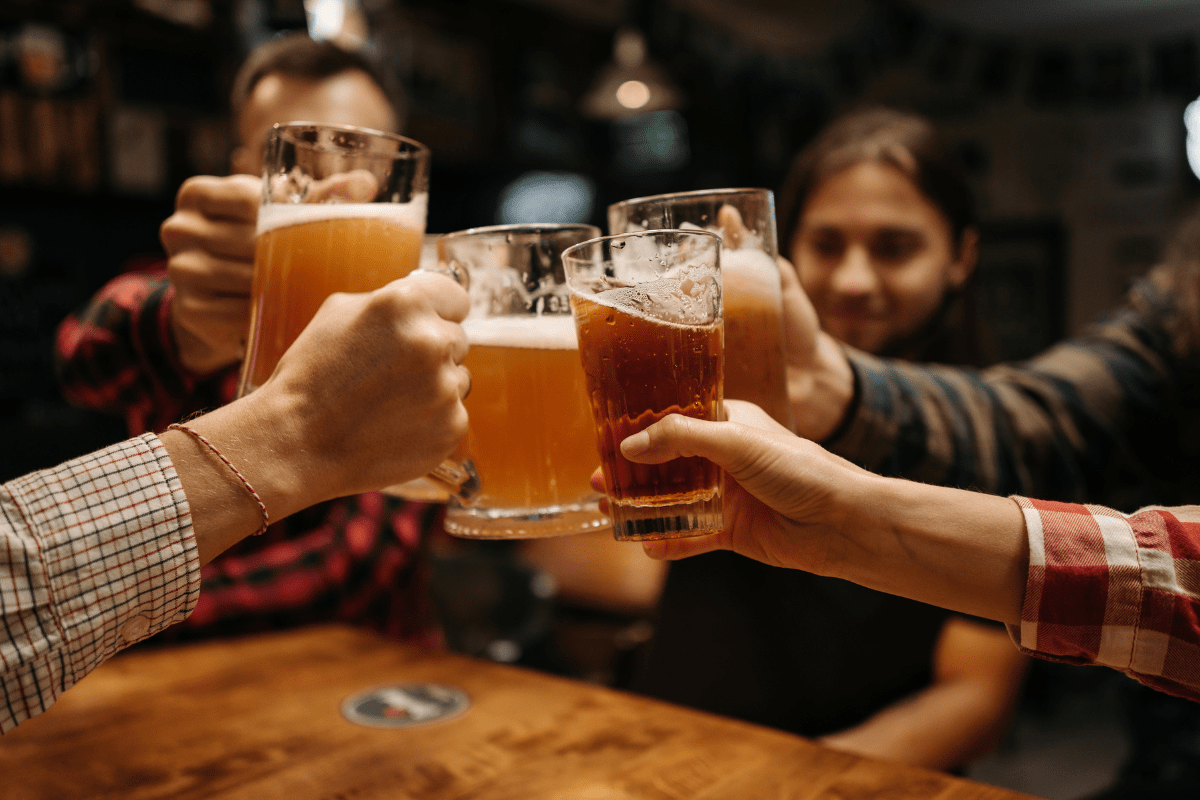You know that feeling when you walk into a restaurant and the hostess asks if you have a reservation? Well, at Idaho's oldest restaurant, they've been asking that question since 1879—back when "reservation" meant something entirely different in the Wild West. These historic dining spots across the Gem State don't just serve food; they serve up stories, sometimes with a side of ghost tales and always with generous portions of authenticity that no modern gastropub could replicate.
The Snake Pit: Idaho's oldest bar where Wyatt Earp left his mark
Let's start with the granddaddy of them all—The Snake Pit in Enaville, which has been continuously operating since 1879. This place is so old, it predates Idaho statehood by 11 years. Originally, it served as everything a frontier town needed: bar, hotel, railroad stop, and yes, a house of ill repute. The bull skull with red light bulbs for eyes hanging on the wall? That's not Halloween decoration—it's an actual artifact from the bordello days.
The Snake Pit has this wonderful ability to make you feel like you've stumbled into a time machine disguised as a tavern. The walls are absolutely plastered with mining and logging memorabilia, the kind of stuff that would make the American Pickers guys weep with joy. There's even a bar stool that supposedly belonged to Wyatt Earp himself, though I'm pretty sure every old Western bar claims Wyatt Earp sat there at some point. The man must have had an iron liver.
What to order when history makes you hungry
The menu has evolved considerably since the days of hardtack and whiskey. The Rocky Mountain Oysters (introduced in the 1950s when the place tried to go respectable) are legendary, assuming you're brave enough to order bull testicles with a straight face. The Idaho nachos deserve special mention—they swap corn chips for crispy potato slices, which is such an obviously brilliant idea that you wonder why the rest of the world hasn't caught on.
Current owners Autumn and Viljo Basso took over in 2024, and they're keeping the tradition alive while adding touches like house-smoked BBQ and huckleberry milkshakes. Fair warning: they're only open Thursday through Sunday, probably because even ghost towns need a break.
Hudson's Hamburgers: The anti-McDonald's since 1907
If The Snake Pit is a museum that serves food, Hudson's Hamburgers in Coeur d'Alene is more like your stubborn grandfather who refuses to get a smartphone. This 117-year-old hamburger counter has been run by five generations of the Hudson family, and they've changed approximately nothing since Teddy Roosevelt was president.
The menu is hilarious in its simplicity. You want options? Here are your options:
- Hamburger ($3.50)
- Cheeseburger ($3.80)
- Double versions of above
- Ham and egg sandwich
- Pie (whatever they have)
- That's literally it
No fries. No milkshakes. No aioli or brioche buns or whatever else the kids are putting on burgers these days. Just hand-formed patties cooked on the same Depression-era grill, served at a 17-stool counter where you'll probably have to wait in line because everyone wants to experience this beautiful anomaly.
The best part? McDonald's once opened nearby and closed within six months. Turns out that when you've been making the same burger for over a century, you get pretty good at it. Big 7 Travel ranked them among America's top 50 burgers, which feels almost insulting—like ranking your grandmother's cooking against a food truck.
The Roundhouse: Dinner at 7,700 feet (gondola required)
Most restaurants make you work for a reservation. The Roundhouse on Bald Mountain makes you work just to get there. America's first mountaintop restaurant, opened in 1939, sits at 7,700 feet and is accessible only by gondola or a hike that'll leave you too exhausted to enjoy your meal.
The timing of its opening was cinematically perfect. Ernest Hemingway was literally down the mountain in Ketchum, finishing "For Whom the Bell Tolls" while construction crews were installing the restaurant's 46 windows. The octagonal building with its four-way stone fireplace became instantly famous after appearing in the 1941 film "Sun Valley Serenade," cementing Sun Valley's reputation as the place where Hollywood went to pretend they liked winter sports.
The journey is half the experience
The gondola ride up is included with your dinner reservation, which is good because otherwise you'd be looking at a very expensive chairlift ticket just to eat fondue. And yes, the fondue is still on the menu—it's basically required when you're dining in what looks like a luxury ski lodge from a 1940s movie, because that's exactly what it is.
They serve prix fixe dinners on Friday and Saturday evenings, and lunch Thursday through Monday during ski season. The food is excellent, but honestly, you're paying for the experience of eating dinner in the clouds while looking down at the same views that made Hemingway want to write about mountains.
Buddy's Italian Restaurant: Where nothing has changed since JFK
Down in Pocatello, Buddy's Italian Restaurant has been serving the exact same recipes since 1961, with one exception: they removed the MSG from the salad dressing in the late '60s, probably after someone's aunt blamed it for her headaches.
The restaurant's opening night was like a scene from a sitcom—they were so overwhelmed with customers that they had to close three hours early after completely selling out of food. Buddy Face and Bill Guido had no idea their grandparents' recipes would create such a frenzy. These were recipes brought over from Italy in the 1920s, the kind written on index cards stained with tomato sauce and measured in "pinches" and "until it looks right."
Their salad dressing has achieved such fame that they ship it internationally—to Europe, China, and Hawaii. Think about that: they're shipping Italian dressing back to Italy. That's like selling ice to Eskimos, except the Eskimos keep reordering.
Celebrity visitors have included Olympic gymnast Nadia Comăneci, NFL Hall of Famer Brian Urlacher, and members of Fleetwood Mac, though I doubt Stevie Nicks came for the unchanged-since-1961 ambiance. More likely, she heard about those meatballs made from the original family recipe.
The railroad restaurants: All aboard the nostalgia train
Eastern Idaho's restaurant scene is deeply tied to its railroad heritage, and nowhere is this more obvious than at D'railed in Idaho Falls. They took an authentic railroad bunkhouse where workers used to sleep between shifts and turned it into a restaurant that somehow imports Japanese A5 Wagyu beef. The cognitive dissonance of eating $200-per-pound beef in a building where exhausted railroad workers once collapsed onto cots is part of the charm.
When hotels become restaurants
The Yellowstone Restaurant in Pocatello occupies the 1915 Hotel Yellowstone, built specifically for Oregon Short Line Railroad travelers back when taking the train was glamorous and not just something you did to avoid airport security. The 313 Whiskey Bar preserves all the original lobby features, including century-old wallpaper that probably contains enough lead to shield a nuclear reactor.
These railroad-era restaurants remind us of when travel was an event, not an ordeal. When checking into a hotel meant steamer trunks and dinner jackets, not rolling suitcases and athleisure. The buildings themselves are time capsules, with their high ceilings and ornate woodwork that no modern developer would ever pay for.
Boise's Basque Block: Where sheep herders became restaurateurs
Boise has the largest Basque population outside of the Basque homeland, which sounds impressive until you realize the Basque homeland is about the size of New Hampshire. Still, the concentration of Basque restaurants in downtown Boise is remarkable, anchored by Bar Gernika, which has occupied a building from 1912.
The building's history reads like a game of musical chairs: Chinese laundry, newspaper substation, Cub Tavern, and finally, in 1991, Dan Ansotegui transformed it into a Basque cultural center. Guy Fieri featured it on "Diners, Drive-Ins and Dives," presumably in the "Dives" category based on the exterior, though the food is anything but dive bar fare.
More than just restaurants
These Basque establishments preserve an entire culture. They're keeping Euskera alive (Europe's oldest language, which sounds like someone speaking Spanish backwards while gargling), celebrating festivals like San Inazio, and serving beef tongue on Saturdays like it's totally normal. Which, in Boise's Basque Block, it is.
The area draws 50,000 visitors during summer festivals, all coming to eat paella, watch folk dancing, and pretend they understand pelota (think racquetball meets jai alai meets confusion). Leku Ona, opened in 2005 by an actual Basque Country native, adds authenticity to a block that's become more tourist attraction than ethnic enclave, but in the best possible way.
Why these places matter (beyond the nostalgia)
Here's the thing about historic restaurants: they're economic engines disguised as dining rooms. Idaho's tourism industry generates $5.8 billion in direct spending, with food services contributing $1.3 billion annually. That's a lot of french fries, folks.
But it's more than money. These places are living museums where you can eat the exhibits. They preserve:
- Original recipes as cultural artifacts
- Architectural details nobody builds anymore
- Family traditions spanning generations
- Stories that textbooks forgot
- Community gathering spaces that predate social media
- Proof that not everything needs updating
- Connections to immigrants who shaped Idaho
- The radical idea that consistency beats innovation
Planning your historic restaurant road trip
Before you start mapping out your historic dining tour of Idaho, here are some practical considerations that the romantic in me hates to mention but the realist knows you need:
Cash policies and quirks: Hudson's is cash-only and closes at 5:30 PM, because apparently credit cards and dinner service are newfangled inventions they're not ready to embrace.
Seasonal operations: The Roundhouse follows ski season schedules, so don't show up in July expecting mountaintop fondue unless you really want to hike for it.
Reservation requirements: Some of these places have been discovered by the Instagram crowd, so yes, you might need a reservation at a restaurant that predates the telephone.
Distance from civilization: The Snake Pit is legitimately in the middle of nowhere, which was probably less of an issue when horses were the main transportation option.
Dietary restrictions: These menus were created when "gluten-free" meant you were out of bread and "vegan" was something you called people from Las Vegas.
The bottom line on Idaho's edible history
These historic restaurants prove that in a world of ghost kitchens and QR code menus, there's still tremendous value in doing things the old way. They're not trying to be retro or vintage or whatever we're calling it this week—they're just being themselves, which they've been doing since before your grandparents were born.
Whether it's the Snake Pit's bordello-turned-family-restaurant evolution, Hudson's magnificent stubbornness, or Buddy's international salad dressing empire, each place offers something you can't get from a chain restaurant: authenticity that can't be manufactured, stories that can't be scripted, and food that connects you to people who saw Idaho transform from territory to state.
The best part? These aren't museums where you look but don't touch. You can sit at Wyatt Earp's bar stool, order a burger from the same grill that survived the Depression, or take a gondola to dinner just like 1940s movie stars. Sure, the health inspector probably has concerns about some of these places, and yes, the menus could use updating by modern standards. But that's exactly the point.
In a state where 93% of travelers engage in food tourism, these restaurants offer something invaluable: the chance to taste history, one bite at a time. Even if that bite is Rocky Mountain Oysters, which I still can't believe people order with a straight face.





